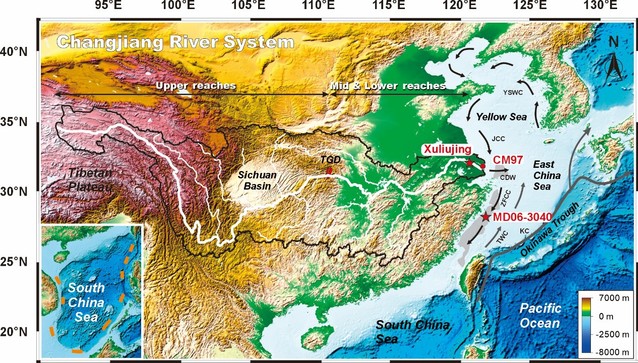Chengfan Yang a, *, Fang Cao a, b, 1, Juan Xu a, Yi Lu a, Lei Bi c, Hongbo Zheng d, e, Shouye Yang a,*
a, State Key Laboratory of Marine Geology, Tongji University, Shanghai 200092, China
b, Office of Laboratory and Facility Management, Southeast University, Nanjing 210096, China
c, China Ocean Engineering Equipment Technology Development Co., Ltd, Shanghai 200011, China
d, Yunnan Key Laboratory of Earth System Science, Yunnan University, Kunming 650500, China
e, School of Earth and Environmental Sciences, The University of Queensland, Brisbane, Queensland 4072, Australia
Abstract:
Continental weathering plays a crucial role in regulating global climate, and siliciclastic sediments preserve valuable information for reconstructing terrestrial weathering and climate changes. However, few case studies focus on weathering signal propagation and possible alteration during complex source-to-sink processes at continental margins. In this study, elemental and lithium (Li) isotopic compositions of suspended particulate matter (SPM) in the Changjiang (Yangtze River) catchment and of Holocene sediments from Core MD06-3040 drilled from the East China Sea inner shelf are analyzed. δ7Li values of SPM range from -2.8‰ to -0.8‰, systematically lower than the core sediments (-0.5 – 0.7‰), despite their similar gain sizes as indicated by the Al/Si ratio. Evidenced by elevated Li/Al and δ7Li values, we infer that mineral differential setting physically alters particulate chemical compositions when SPM passes the estuary. This is further supported by a Li isotopic mass balance model, which quantitatively demonstrates a decline of weathering product by ~15% in core sediments relative to the riverine SPM. Additionally, variations of weathering products and igneous components in marine core sediments can be affected by the monsoon climate, further altering terrestrial weathering signals at continental margins. This study provides the first quantitative assessment of weathering signal modifications through applying Li isotopes during the sediment source-to-sink process, offering novel insights into the complex interplay of weathering processes and sedimentary dynamics at continental margins.
Full article:https://www.sciencedirect.com/science/article/abs/pii/S0921818125002516

Fig. Schematic diagram of the study area and sample location

